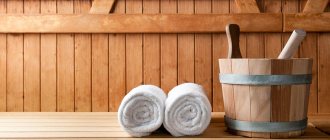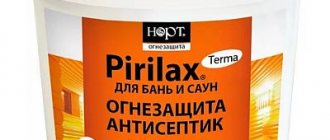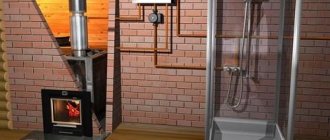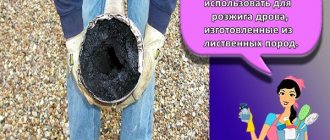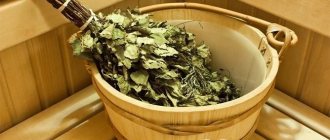How pleasant it can be to warm up or take a steam bath in a real Russian bathhouse. Hot air has a beneficial effect on the skin, cleansing every pore, and on the internal organs, slowly warming them up. However, a visit to such a place should take into account the recommendations of what should be in the bath first aid kit and safety rules, how to avoid various unpleasant consequences, including heat stroke in the bath.
Effect on the body
It is known that visiting a bathhouse has a positive effect on all body systems. If you steam properly, you can cure many diseases. How does a bath affect the body:
- The cardiovascular system. A visit to the steam room helps improve blood circulation on the first visit, and subsequently tones the entire cardiovascular system.
- Respiratory system. The condition of the respiratory tract mucosa improves. Hoarseness, cough and noise in the lungs decrease or disappear.
- Nervous system . The person calms down, the feeling of anxiety goes away, and the headache goes away.
- Musculoskeletal system. Muscles and joints are strengthened. Old traumas cease to remind themselves.
- Kidneys and urinary system. During vaping, the kidneys reduce urine output. This effect can last up to 6 hours.
- Digestive system. The immune system is strengthened and the activity of the internal organs of the body is regulated.
- Leather. The skin is regenerated, metabolic and immune functions are improved. The skin condition returns to normal.
In general, the bath has a strengthening effect on the body and afterwards lifts your mood and improves your well-being. More details about the benefits of a bath are written in this article.
Visiting the bathhouse with a temperature above 37º is not recommended. What is the connection between elevated temperature and steam room? Direct: while in the steam room, the body temperature rises, and accordingly this can lead to a weakening of the body and even a heart attack. Moreover, you should not go to the bathhouse at a temperature of 38º. We must take into account the fact that immediately after visiting the bathhouse, the temperature may continue to rise.
What happens to the body when a person steams?
At normal body temperature, you can steam at least every week. Here are the conclusions the researchers came to about the effects of the bath on the body:
- the surface temperature of the body (skin) rises quickly, and when staying in the steam room for more than 5 minutes, it accumulates and is transmitted to the internal organs;
- as a result, the heart rate accelerates in comparison with the initial values, reaching 100 beats per minute;
- blood circulation in all organs is activated, in particular peripheral circulation is enhanced;
- when beating with a broom, the heart rate increases even more, creating an increased load on the heart; for healthy people this is a good workout;
- The respiratory rate (respiratory rate) accelerates.
Thanks to increased sweating in the bath, the thermoregulation of the body as a whole improves, provided that it is healthy. But the body, fighting the disease, may not be able to withstand such training.
For adults
It is believed that if the temperature has risen, the body is fighting viruses. But at the same time, the content of leukocytes in the blood increases, which puts an extra burden on the body, so visiting a bathhouse with an elevated temperature is not recommended; with a temperature of 37.2, going to the steam bath is prohibited. An adult whose temperature begins to rise in the bathhouse may feel the following signs:
- weakness;
- rapid pulse;
- increased heart rate.
And if a person comes to the bathhouse with an illness, he may even faint.
If after a steam bath an adult’s temperature rises to 38º, then it is not necessary to take any serious action. You should look at the person’s well-being. If it is higher, then it is necessary to give the person time to cool down, and then measure the temperature and, if necessary, reduce it. You can read about what temperature should be in the steam room in this article.
Thermal insulation and ventilation
In a sauna you can steam at temperatures over 100 degrees Celsius, so its insulation plays an important role in efficiency and energy costs. Particular attention in this process should be paid to the steam room, where heat loss should not exceed the norm, otherwise the procedures will not have any effect. Insufficient insulation of a room can lead to a reduction in its service life.
Insulation should begin from the floor. To do this, the foundation of the building (if it is separate) is made multi-layered, using thermal insulation material in one of the layers. To do this, a pit is dug, filled with sand, insulation is laid, and the whole thing is filled with cement mortar. For sufficient strength, the floor screed is laid on a reinforced concrete base.
The temperature of the bath can be very high, so insulation should be carried out exclusively with environmentally friendly and safe materials. Do not use finishes that are not resistant to high heat and high humidity.
Felt is excellent for insulating a steam room. This is really pure material, but it is very difficult to find. Some experts recommend using cork coverings if the manufacturing process does not involve the use of composites that emit harmful substances at high levels of heating. The temperature in the bath, the norm of which can be individual for each person, creates a lot of steam, so the felt and cork are insulated with foil.
Free-standing rooms made of logs, with an open log interior surface, perfectly smooth out thermal and hydraulic shocks in the steam room during watering of stones. This advantage makes it easier for the body to perceive such changes indoors.
Ventilation should ensure a normal flow of fresh air during procedures and quick drying of the room after use. Ventilation is considered incorrect if the temperature in the bathhouse and the distribution of air flows are disturbed.
There are several methods of ventilation: natural, mechanical and combined. Since cold air is heavier than hot air, the inlet should be located at the bottom and the exhaust at the top. It is not recommended to install a hood in the ceiling, since such a design quickly cools the room.
For children
Quite often, parents take their children to the bathhouse. Can they have a fever afterwards and how does the child’s body react to the high temperature in the steam room.
After leaving the steam room, the child may be slightly pink and have a fever. This is not always critical, but just in case, parents should know why the child might have a fever. Main reasons:
- ARVI or cold;
- transient hyperthermia;
- heatstroke.
Due to the high air temperature in the bathhouse, the body’s thermoregulation may not cope, hence the increase in temperature afterward. Body temperature begins to drop after sweating. But not always. For children under 3-4 years old, a visit to the bathhouse may result in overheating.
What to do if the child still overheats:
- he should be immediately removed from the bathhouse without a sharp change in air temperature;
- Wash or bathe the child with warm (never hot or cold) water;
- apply a damp bandage to the forehead;
- no longer allow visits to the steam room, even if the child begins to feel better;
- If the condition does not normalize, immediately consult a doctor.
What drink
Tea from medicinal herbs is brewed according to different rules. Take a couple of spoons of herb and pour in hot, but not boiling, water. Cover the cup with a saucer. After 10 minutes the infusion is ready.
You need to brew herbal tea not with boiling water, but with hot water.
But it is not always possible to brew tea in the bathhouse. Then you can take the drink with you in a thermos. The flask is rinsed with hot water, herbs are added at the rate of 2 teaspoons per glass, and hot water is poured. By the time you get to the bathhouse, the tea will steam and be strong and aromatic.
After visiting the steam room
Some people may feel unwell after visiting the bathhouse. The most common of them are:
- headache;
- blood from the nose;
- flushed face and body;
- dizziness;
- noise in ears;
- nausea and vomiting;
- prostration.
The causes of these ailments may be:
- a person has a disease that he does not know about;
- the rules for visiting the steam room were violated;
- coming to the bathhouse after a hard day or workout.
In order to avoid any discomfort or if this is your first time in the bathhouse, you should not go into the steam room for a long time. It is better to make several short visits with breaks.
In a healthy body healthy mind. And in this, the bathhouse is a great helper. It strengthens and strengthens health well. But you can’t visit it without thinking! Therefore, before going to the bathhouse, you should find out whether your health condition allows you to do so. Also, you should not go to the bathhouse with an elevated body temperature and immediately after it normalizes.
A little about the benefits of bath brooms
Using a broom in a bathhouse is an art. You need to know how to choose the right broom and steam it. In Russia, the most common brooms are:
Some brooms are intended for healing. Sprigs of medicinal herbs and juniper are inserted into their middle. These additives, hidden in the leaves, stimulate blood circulation well and do not cause discomfort to the skin.
Going to the bathhouse without a broom makes no sense, especially when it comes to visiting for the purpose of healing.
However, it is better if brooms are used according to their intended purpose.
- Birch broom improves the appearance of the skin and helps thin mucus during bronchitis.
- A product made from nettle has a positive effect on the nervous system and has an expectorant effect.
- Linden broom cleanses the bronchi, provides antipyretic and anti-inflammatory effects.
- When using a eucalyptus broom, a person receives easier breathing, an antiseptic and antiviral effect, and clears the nasopharynx.
- Products made from juniper and fir material help improve respiratory function and guarantee anti-inflammatory and antibacterial effects.
- Alder broom facilitates the removal of mucus and is an excellent remedy for colds and coughs.
Is it possible to get heatstroke in a bathhouse, symptoms, first aid
A bathhouse or sauna not only allows you to have fun in the company of loved ones, but also improve your health, remove waste and toxins from the body, and prevent premature aging of the skin. At the same time, the bathhouse also has contraindications, namely diseases of the cardiovascular system. You should also follow all the rules for staying in a room with high temperature and humidity. Next, we will consider in more detail how to provide first aid to a victim in a bathhouse.
For whom the bathhouse poses a particular danger?
Sitting in a steam room for a long time is dangerous even for a healthy person, but there is a category of people for whom it is important to observe the measure when visiting a bathhouse or sauna. Risk groups include:
- Hypertensive patients with stable blood pressure of about 200 mm Hg. and more.
- Patients with respiratory diseases in the initial active, acute and chronic stages. These diseases include ARVI, tuberculosis, pneumonia and other diseases that create additional stress on the heart muscle.
- Kidney inflammation, water and electrolyte imbalance.
- Inflammatory processes of the gastrointestinal tract, including chronic conditions.
- Dermatological diseases.
- Violation of stable functioning of the central nervous system.
- Diseases of the genitourinary system, gynecological problems.
- Recovery period after surgery.
- Pregnancy is a contraindication to visiting a sauna or steam bath only if there are complications, but you should not overuse it and visit a very hot steam room. A consultation with an obstetrician-gynecologist is required first.
- The presence of low-quality tumors, oncology.
Why does heat stroke occur?
It is very easy to get heatstroke in a bathhouse or sauna if you do not follow basic rules of behavior.
Heat stroke occurs due to the following factors:
- Prolonged stay in a room with elevated body temperature. While in the sauna, you need to periodically cool your body in the shower or pool to avoid overheating.
- Sports activities in the bathhouse.
- Obesity also leads to overheating in humid and warm environments.
- Synthetic clothing that does not allow the body to “breathe” and traps heat.
- Taking hormonal drugs.
- Bad habits such as smoking.
Is it possible to float your feet?
Modern therapists and pediatricians have long struggled with the belief that a sick person (child or adult) can have their feet steamed or taken to a bathhouse when they have a fever. At high temperatures, steaming your feet is contraindicated, and parents should remember this.
If there is no temperature, you can “steam your feet” to warm them up after a person has been caught in the rain, gotten their feet wet, or gotten cold. Warming the lower extremities leads to a reflex relief of swelling of the nasal mucosa, helps relieve a runny nose and temporarily reduce congestion.
Symptoms
In conditions of increased health hazard, namely in a bathhouse, you must follow all safety rules. Even a healthy person in conditions of increased heat can lose consciousness.
Main signs of heat stroke:
- When exposed to heat, the heart rate increases, which can negatively affect the functioning of the cardiovascular system.
- Pain in various parts of the head. Mostly the pain is pulsating.
- In a sauna, symptoms include: deterioration of breathing, even suffocation.
- Hearing impairment, namely a feeling of buzzing in the ears.
- Dizziness and lack of coordination, even fainting.
- Darkening in the eyes.
- Loss of consciousness and cardiac arrest.
When the first alarming symptoms appear, be sure to cool your body with a cool bath or shower. The victim should immediately be taken out into fresh air, where the body temperature is lower than in the bathhouse. The victim should also be given small amounts to drink to avoid dehydration.
From a hobbyist's point of view
People who regularly visit the steam room get sick less often. During a cold, avid bath lovers recommend taking a good steam with a broom, sprinkling water with eucalyptus or fir oil on the stones and drinking herbal tea with honey.
At a low temperature during a cold, such people can easily afford to visit the bathhouse, since their body is trained and accustomed to temperature stress. Those who go to the bathhouse occasionally should not chase after them. Beginners should completely postpone going to the steam room until they have fully recovered.
First aid
When the first alarming symptoms appear in the bathhouse, you need to call an ambulance and proceed with the following actions:
- First of all, you should take the victim to a room where the air temperature is lower compared to the steam room.
- Next, you should free your body from excess clothing to speed up the cooling process of the body.
- It is necessary to lay the victim on a flat surface and fan him.
- If the victim can move, it is recommended to take a cool shower or plunge into the pool to normalize body temperature.
- If you lose consciousness, you should give ammonia a sniff.
- In the absence of pulse and breathing, indirect cardiac massage and artificial respiration should be performed.
- The victim is wiped with cold water, cold compresses are applied to the head and limbs, or covered with a wet sheet.
Fainting in a bath or sauna
Heat stroke after a bath is a typical situation for an unprepared person. Due to increased body temperature and humidity, the blood supply to the brain cells is automatically disrupted, which begins to “starve”. Due to oxygen deficiency, dizziness and loss of consciousness may occur.
So, under the influence of heat in the bath, the skin begins to turn pale, darkening appears in the eyes, headaches and dizziness develop, which can lead to dizziness and even death.
When the first alarming symptoms appear, you should go out into the fresh air, dive into the pool or take a cool shower to avoid overheating of the body and other negative consequences.
The most important thing is for the victim to remain calm. After all, any activity leads to the production of additional energy, which will worsen the condition. That is why the victim is placed on the bed and covered with a cold sheet until the ambulance arrives.
In addition, to improve blood circulation to the brain, it is recommended to raise your legs a few centimeters above your head.
What should be in a bath first aid kit
In the bathhouse there is not only increased air temperature, but also humidity. Therefore, the steam room in the steam room should be fully stocked with a first aid kit for all occasions.
So, the first aid kit in the bathhouse should have the following items:
- First of all, anti-burn creams and ointments should be used due to the high risk of getting a burn from hot steam.
- There should also be cotton wool and bandages so that you can apply a bandage to the damaged area.
- In order to disinfect a burn or wound, there must be hydrogen peroxide.
- If you lose consciousness, ammonia will help.
- Validol or nitroglycerin will help with heart failure.
- Medicines for headaches and muscle spasms.
- Ice for cold compresses.
Clinical manifestations
Symptoms of heatstroke and sunstroke vary significantly depending on age. A child of the first year of life reacts to overheating with a sharp increase in body temperature and lethargy. Often infants have disrupted sleep processes: they cannot fall asleep for a long time, are capricious, and, having fallen asleep, constantly wake up.
In children older than 3 months, beads of sweat may appear on the forehead and back. But more often, babies do not sweat at all, they immediately become uniformly hot, their skin turns sharply pale, their pulse becomes thread-like (barely palpable).
If help is not provided in time, the baby may begin to have convulsions and develop depression of consciousness.
In older children and adolescents, the manifestations of overheating are more varied. Characteristic signs of heat/sunstroke in adolescents
| Frequent | Rare |
|
|
Heatstroke and sunstroke in a child are not always accompanied by an increase in body temperature. The temperature may remain normal, but due to the cessation of sweating, the victim feels weakness, nausea, etc.
First aid
In case of sunstroke, it is necessary to take the child to the shade; in case of heatstroke, place the victim in a cooler room and provide him with a flow of fresh air (open a window or place a fan nearby).
An overheated baby should be wiped with cool wet wipes, and a towel soaked in cold water should be placed on his forehead. Remove excess clothing from the victim, if any. Give me something to drink.
In most cases, this help for a child with heat and sunstroke is sufficient.
Drug therapy
If a child’s temperature is above 38.5°C (and in a patient under one year above 38°C), it may be necessary to take antipyretic medications: Paracetamol, Nurofen, or others.
If necessary, the victim is given symptomatic therapy (if seizures develop, anticonvulsant measures are taken; if blood pressure decreases, measures are taken to restore it and further stabilize it).
In severe cases, severe dehydration with profuse vomiting, high fever, and a sharp decrease in blood pressure, hospitalization in a hospital is indicated, where the child should undergo infusion therapy (intravenous drip administration of saline drugs).
In case of loss of consciousness with cessation of breathing and heartbeat, the child requires a complex of resuscitation measures.
- out of season warm clothes,
- synthetic, airtight fabric from which clothing is made,
- excessive physical activity in the sun or in a stuffy, poorly ventilated room,
- high ambient temperature,
- lack of headgear when in open areas,
- prolonged exposure to the sun or high temperatures,
- insufficient drinking regime,
- obesity,
- low body weight,
- unbalanced diet,
- exposure to the open sun during lunch hours from 12.00 to 16.00.
The development of heat and sunstroke in children is facilitated by high psycho-emotional and physical stress, alcohol intoxication (in adolescents), acute diseases, exacerbation of chronic pathology, as well as heredity - the predisposition of close relatives to overheating.
There are 2 sets of preventive measures.
- Optimization of external factors. This complex includes the correct selection of clothing (according to the season and the weather), timely ventilation of living quarters, staying in a hat in the sun, wearing clothes made from natural fabrics, and adequate physical activity in warm, sunny weather. To prevent overheating, exposure to the open sun from 12.00 to 16.00 is prohibited. Carrying out hygiene measures is recommended at a water temperature of no higher than 37.5°C.
- Optimization of internal factors. Balanced and regular nutrition, hardening, combating excess body weight/underweight, timely and correct treatment of acute and chronic diseases, sufficient drinking regime.
It is important to treat overheating of a child with extreme caution. This is a dangerous condition that can lead to dangerous consequences if left untreated.
Increased body temperature in the steam room
Normal temperature
With normal temperature exchange, heat emanates from the organs of our body to the integument.
When visiting a steam room, sauna or hot bath, the heat exchange process changes, in this case the heat is no longer released by our body, but is absorbed by it in large quantities, don’t forget to look at the hair extensions before and after photos after the procedures. The body's only defense mechanism against overheating is sweat, or rather its secretion. Sweating is a kind of cooling system for our body. So, while in the steam room, changes occur in the body due to the heating of the blood, which in turn affects the central nervous system.
Temperature after a bath in an adult
Visiting the bathhouse does not lose its popularity today. Moreover, when going to the steam room, parents often take their children with them. What are the risks for them when visiting the bathhouse? Can the temperature rise after this procedure?
Sometimes parents notice that after visiting the bathhouse, the baby’s skin turns pink and he becomes hot to the touch. At the same time, the body temperature turns out to be elevated. What is this connected with?
After a bathhouse, a child often develops a fever. It is not always dangerous to health. However, in some cases, parents are required to know how to help. Sometimes you can’t do without a doctor’s examination.
The following reasons for the increase in temperature after a bath can be identified:
- Transient hyperthermia.
- Heatstroke.
- ARVI or cold.
Since the air temperature in the bathhouse reaches 60–70% and humidity 80–90%, normal body thermoregulation does not cope with its task.
This is why children often experience a slight increase in temperature, because hot, humid air interferes with heat transfer. Typically, cooling the body occurs through sweating, but with high humidity it is difficult or does not have the desired effect.
Moreover, if the baby is less than 3–4 years old, his thermoregulation is simply imperfect. And visiting a bathhouse can quickly lead to overheating.
Transient hyperthermia is characterized by:
- A slight increase in temperature, within the subfebrile range.
- Its quick normalization after a shower or swimming in the pool.
- No complaints.
Since neither parent carries a thermometer to the bathhouse, transient hyperthermia in the baby can only be assumed. It will not cause any harm to health. However, even low-grade fever should not be ignored, since overheating in children occurs very quickly.
By heatstroke, doctors mean overheating of the body. This is facilitated by being in a room with high temperature and humidity, as well as imperfect functioning of the cardiovascular system.
This occurs when unprepared children, especially younger ones, visit the bathhouse.
Symptoms of heat stroke:
- Significant fever (up to 39° and above).
- Sharp hyperemia of the skin.
- Labored breathing.
- Cold sweat.
- Apathy or, on the contrary, excessive excitement.
- Headache.
- Nausea and vomiting.
- Cramps.
A characteristic feature of overheating is the absence of ARVI symptoms - runny nose, cough, rash.
Heatstroke can develop quickly in young children if precautions are not taken.
Compliance with precautions allows the child to safely adapt to bath procedures. To do this, parents need:
- Tell us about your upcoming visit.
- Before entering the steam room, pour warm water over the baby.
- Put a special hat on your head to protect your hair from drying out and overheating.
- Do not steam for more than 5 minutes on your first visit. For small children this time period is three minutes.
- Babies should be steamed when the bathhouse is just heating up, and the temperature and humidity in it have not reached their maximum.
In addition, you should not plunge children into cold or, especially, icy water after the steam room. For contrast, a shower at room temperature is sufficient.
If your baby suddenly shows signs of overheating, you need to be able to give him first aid.
If a child complains of feeling unwell, you need to immediately take him out of the bathhouse. However, there should not be a sharp temperature change. The conditions must be comfortable for the baby to stay.
It is advisable to wash or pour warm (not hot or cold) water over it. You can put a damp bandage on your forehead.
Even if the child’s well-being has improved, a second visit to the steam room is not recommended.
If no changes in the condition are observed or the baby becomes worse and signs of overheating increase, it is necessary to urgently seek medical help.
Sometimes after visiting the bathhouse the child gets sick. His body temperature rises, a runny nose, cough, and sore throat appear. Why is this happening?
The following factors contribute to disease:
- Failure to comply with the temperature regime in the bathhouse.
- Swimming in a pool with very cold water immediately after the steam room.
- Walking in cold weather after visiting the bathhouse.
However, baths and colds are not always interconnected. Most often, hyperthermia is a common coincidence.
Any disease has a prodromal period when there are no symptoms. And it is not surprising that at this time parents allow the child to visit the bathhouse.
ARVI can be suspected if, in addition to fever, other symptoms are present. Most often this occurs:
- runny nose;
- headache;
- pain and sore throat;
- cough.
In addition, with ARVI, manifestations increase over time, and in the first 2-3 days the temperature can rise to high levels. If we are talking about heat stroke, then the child’s condition usually improves with elimination of overheating, rubbing, and a cool shower.
Often, by the word “bathhouse,” parents mean a sauna. It is considered safer for children of any age. The air temperature in the sauna is lower and the humidity is much lower. The air in the room is dry and hot.
If you do not abuse your time in the sauna, this procedure will not harm children. In some cases, they may experience transient hyperthermia.
However, the sauna is contraindicated in the following pathologies:
- Oncological diseases.
- Vascular disorders.
- Hypertension-cerebrospinal fluid syndrome (increased intracranial pressure).
- Convulsive syndrome, including epilepsy.
With these diseases, visiting a sauna can cause not only fever and convulsions, but also significantly worsen the baby’s condition.
Hyperthermia after a bath can develop due to various reasons. It is important to monitor your child and consult a doctor in time to prevent serious health problems.
Under normal temperature conditions, heat flows from the organs that secrete it to the integument of the body. In a steam room, on the contrary, the heat flow is directed from the outside to the inside of the body by radiation, conduction and convection. The moment of cooling remains only the removal of heat through the evaporation of sweat.
The trigger mechanism for physical and chemical thermoregulation reactions is thermal irritation of skin and vascular receptors with a subsequent response to this from the thermoregulation center. When the body is significantly overheated in a steam room, a change in physiological functions also occurs due to the action of heated blood on the central nervous system.
In hot conditions, heat transfer becomes difficult and body temperature rises. Body temperature increases more significantly in a steam bath (up to 40°C) and less in a dry air bath (up to 39.2°C). Studies conducted by K.A. Kafarov (1974) showed that in healthy people in the first five minutes after entering the sauna, the temperature, as a rule, decreases slightly, but more noticeably at 70°C (on average by 0.104°C) and less at 100°C (by 0.032°C).
By the 11th minute (at 70°C) and by the 7th minute (at 100°C) of staying in the sauna, it returns to the original level and then begins to gradually increase. The rate of increase (increase per 1 minute) is higher at 100°C (up to 0.114°C at 17.2 minutes, whereas at 70°C 0.08°C at 25.8 minutes). Moreover, the rate of increase at the beginning and before leaving the sauna is less significant than at the indicated moments in the sauna.
In the first 4-5 minutes (at 70°C) and up to the 8th minute (at 100°C) after leaving the sauna, body temperature continues to rise. Subsequently, the body temperature decreases. This process after a sauna occurs more evenly and lasts longer than increasing the temperature in the sauna.
The rate of decrease in body temperature after a sauna is almost the same for conditions of 70 and 100°C and amount to 0.070 and 0.066°C per minute, respectively. By 55-60 minutes of the recovery period after the sauna, body temperature decreases almost to the initial level, exceeding it by only 0.224°C at 70°C and by 0.227°C at 100°C in the sauna. Thus, the dynamics of heat exchange processes under sauna conditions shows a clear dependence on the temperature level.
Analysis of the research results allows us to conclude that in hot experimental conditions (70 and 100°C), chemical thermoregulation processes come into play first and heat production processes decrease. But the effectiveness of this compensation is insufficient, since the heating of the body occurs very intensely and overcomes the effect of chemical thermoregulation.
At the moment when the body temperature begins to exceed the normal level, physical thermoregulation reactions are actively activated, i.e. heat transfer processes intensify: sweating, breathing, dilation of skin blood vessels. It should be noted that the processes of physical thermoregulation are activated (visually) precisely at the moment the body temperature begins to rise, i.e. respectively, at the 7th minute (at 100°C) and the 11th minute (at 70°C) of staying in the sauna.
Thus, one can see the gradual inclusion of certain types of thermoregulatory processes in the body in hot conditions.
After leaving the sauna and stopping the thermal effect, the body temperature continues to rise for some time, which is explained, on the one hand, by the peculiarities of the dynamics of metabolic processes, and on the other, by the rapid transfer of most of the heated blood from the skin (due to a reduction in the diameter of the lumen of the blood vessels in it) into internal tissues. Important information about health What should I do if, when I suddenly change my body position, my vision gets dark and I start to feel dizzy? Is it true that it is better not to put your phone under your pillow at night, because this can be harmful to your health? Is it possible to drink liquid immediately after eating? ?specialist
The degree of “inertial” increase in body temperature definitely depends on the power of the thermal effect, which is more significant at 100 ° C in the sauna. The decrease in body temperature is further explained by improving heat transfer conditions, which makes it possible to balance heat exchange processes and normalize body temperature.
The main general reactions of the body that are caused by hyperthermia (increase in temperature):
- increase in blood flow volume;
- a general increase in the intensity of metabolic processes, energy metabolism and metabolism of basic substances;
— shift of the acid-base balance in the direction of acidosis (increased acidity);
— switching of the autonomic system with corresponding changes in various functional systems;
— activation of immune reactions (agglutination titer, opsonin index);
— stimulation of hormonal systems;
— irreversible inhibition of the growth and ability of cancer cells to cell division (during extreme hyperthermia);
- irreversible damage to the entire metabolism of fermentative and respiratory substances in tumor cells during extreme hyperthermia - in contrast to normal cells;
- increasing the elasticity and stretchability of connective tissue; and muscles.
Factors that determine the heat balance in a steam room:
- air temperature in the place of the steam room where the person is;
- air humidity; high air humidity makes it difficult for water to be released through sweat, limits the capabilities of the cooling mechanism, and accordingly leads to faster heating, worsening a person’s well-being;
— air ventilation: light spontaneous air movement promotes the evaporation of sweat;
— duration of thermal exposure;
- the ratio between the surface of the body and the mass of the person in the steam room: if this ratio is relatively large, then a greater amount of heat reaches the surface (children!);
— thermal conductivity of the outer layers of the body: adipose and horny tissues conduct heat poorly;
- the degree of blood supply to the skin and subcutaneous tissue, improved blood supply promotes the spread of heat based on convection;
- degree of activity of the sweat glands: evaporation of sweat serves as a means of heat transfer;
- the ability of the respiratory tract to secrete secretions, since their evaporation allows the body to cool;
— the mobility of a person in the steam room, his movements, massage with a brush or broom allows you to remove the insulating air layer that adheres to the skin, and thus increase the supply of heat to the surface of the body. Muscular work contributes to the release of additional heat.
As a result of regular visits to the bathhouse, a person begins to better tolerate high air temperatures, and his tendency to catch colds statistically decreases. A sign that a person is beginning to better tolerate the atmosphere of a steam room is a slower pulse compared to the first visits to the bathhouse and a rapid onset of sweating. For a trained person, staying in a steam room, even at very high temperatures, subjectively seems much less burdensome than for a person who is not used to a steam room.
In the modern world, absolutely everyone is exposed to heavy metals and toxic chemicals. And this is why regular detoxification of your body is of utmost importance. The sauna is a great way, as during the process your tissues warm up quite deeply, which improves metabolic processes. Increasing body temperature promotes better energy production at the cellular level, which helps get rid of infections faster.
Viruses, tumors and cells affected by toxins do not tolerate heat. That is why saunas are so useful, because they fight all problems through the largest organ of the human body - its skin. Regular trips to the sauna activate your skin through sweating, which helps your body rid itself of heavy metals and toxic chemicals and allows you to achieve optimal health. In fact, one 2012 study demonstrated that sweating in a sauna is extremely effective in ridding the body of harmful heavy metals such as cadmium, arsenic, mercury and lead.
While many people will find it difficult to cope with the intense heat that accompanies a sauna session, heating up to 60-90 degrees Celsius is necessary to induce heavy sweating. Saunas come in a wide variety of types - heated with wood, electricity or gas. There are also infrared options that heat the body but leave the air cool. This type of sauna does not require preheating, which allows you to save electricity (or other energy source) and time. There are also infrared bulbs that can provide warming and stimulating color therapy. Research shows that an infrared sauna is most beneficial for cleansing the body of harmful substances, as the deep penetration of infrared energy allows cells to more effectively remove toxins from the body.
Due to the fact that you sweat very actively in the sauna, blood circulation also improves, since blood has to circulate closer to the surface of the skin. In turn, this has a positive effect on your skin by expelling bacteria. Visiting the sauna will allow you to get rid of dead epidermal cells, as well as defeat acne, blackheads and blackheads. It will also help you get rid of such an unpleasant thing as cellulite. Moreover, saunas provoke a hormonal surge, which entails a whole range of various positive effects in the fight against aging.
Many people lead a sedentary lifestyle due to the fact that they have to sit in front of a computer all day at work. They practically don’t get up and don’t move – let alone sweat a lot. But sweating is a necessary process for ridding your body of unwanted substances that people are exposed to every day without even realizing it. When your body is exposed to the steam of a sauna, white blood cells are produced much faster, which helps your body defend against a wide variety of diseases. Failure to properly detoxify the body can lead to the accumulation of heavy metals in the body, which, in turn, can trigger serious diseases, including cancer.
When your body temperature increases in a sauna, endorphin, the feel-good hormone, is produced by your central nervous system, allowing you to release pent-up stress. It also relaxes your muscles, releasing tension that accumulates in various parts of your body. The calming and relaxing properties of a sauna have also been shown to improve the quality of sleep in people.
Bathhouse for colds: how to properly treat acute respiratory infections
The bathhouse is a universal means of healing that has a beneficial effect on the condition of the entire body. Any more or less experienced bathhouse attendant will tell you in a private conversation many stories about miraculous cases of getting rid of diseases thanks to steaming in a bathhouse. The bath is especially effective for colds. As a rule, if the disease has just begun to overcome, one visit to the steam room is enough for not a trace of it to remain.
- 4 Remedy No. 2. Therapeutic rubbing
- 5 Remedy No. 3. Aromatherapy
- 6 Remedy No. 4. Bath medicinal drinks
How are bath procedures useful for acute respiratory infections?
Recovery from a cold in a bathhouse occurs thanks to simple physiological processes that occur in the human body when exposed to high temperatures and moist steam. In the process of taking bath procedures:
- Hot steam helps open pores and flush out pathogens from them.
- High temperature increases blood circulation, and this allows you to cleanse the blood and remove harmful substances from it.
- The body begins to produce 20% more white blood cells than under normal conditions. Accordingly, the more leukocytes, the faster they will destroy foreign bacteria and viruses.
- Wet steam (in a Russian bath) affects the bronchi and lungs, like extreme inhalation. The respiratory system is cleansed of mucus, resulting in easier breathing and cough relief.
- Steaming, especially with a broom, has a beneficial effect on joints and ligaments. A cold is very often accompanied by body aches - a bath quickly relieves this symptom.
There is a time for everything or when is it better to stay home?
The question of whether a bath is useful for colds cannot be answered unequivocally. On the one hand, yes, warming up in a steam room can significantly speed up recovery. However, only if the disease has just begun. If you go to the bathhouse as soon as you feel unwell, then it is likely that the cold will subside on the same day and the acute stage will not begin. It is useful to look into the bathhouse immediately after a cold, in the first days after recovery. This will give you energy and help restore your strength.
However, in some cases, a cold and a bath are not compatible. A visit to the bathhouse will only lead to an increase in the painful condition if:
- the disease has entered an acute stage. If viruses and bacteria have been in your body for several days, then elevated temperatures in the bathhouse will only accelerate their reproduction. The disease will begin to progress and, quite possibly, will reach complications - pneumonia, bronchitis, asthma, etc.
- you have a high temperature - from 37°C and above. Even a slight increase in temperature causes the human heart to start working at an accelerated rate. If you add to this the temperature load in the steam room, you can easily get a heart attack. Or, at best, weaken the body so much that it no longer has the strength to fight the disease.
- Acute respiratory infections are accompanied by headaches, which can intensify in the bathhouse. And this can lead to dizziness and even fainting.
- Herpes appeared on the lips. In humid and hot conditions, the herpes virus multiplies faster.
Let's summarize: visiting a bathhouse during a cold will benefit you only in the initial or final stages of an acute respiratory infection. If this sounds like you, then welcome to the bathhouse - let's start the treatment!
Remedy No. 1. Massage with a broom
When treating a cold in a Russian bath, you should definitely take a steam bath with a broom. This will increase blood circulation in the capillaries, activate sweating, speed up metabolism, and help flush out impurities and toxins from the pores. Moreover, it is important to choose the “right” broom:
- Linden broom – accelerates sweating, calms the nervous system.
- Birch broom – promotes the removal of mucus from the bronchi, eliminates pain in muscles and joints.
- Coniferous broom (juniper, fir, spruce) - stimulates sweating and disinfects the air in the steam room.
- Eucalyptus broom – cleanses the air of pathogens, eliminates cough, runny nose, and sore throat. It is especially useful to “breathe” with a eucalyptus broom. To do this, you need to steam a dry broom, and then press it to your face and breathe in the emanating ethereal vapors. Everything will take about 5 minutes, and you will feel relief from the painful condition immediately.
Remedy No. 2. Therapeutic rubbing
The better you warm up and sweat in the steam room, the faster you will be able to say goodbye to the disease. To enhance sweating, therapeutic rubbing with special “sweat-dispersing” agents, which include honey and salt, is especially effective.
You can do this: mix honey with salt (fine table salt or crushed sea salt) in a 1:1 ratio and rub this mixture on the heated skin directly in the steam room. If you have a runny nose or cough, this procedure will work better than any medicine!
Remedy No. 3. Aromatherapy
Let us remind you that by inhaling hot, moist steam, a person receives the effect of inhalation. At the same time, the airways are moistened, and mucus is liquefied and removed. This happens with any deep inhalation, but when moist vapors are enriched with essential aromas, the effect will be several times higher.
To combat colds, the aromas of pine, fir, eucalyptus, juniper, geranium, and lavender are traditionally used. The solution for inhalation is prepared as follows: 10-20 drops of essential oil of one of the above plants are diluted in 1 liter of water. Most often, heater stones are watered with this solution instead of ordinary water. However, this option is not ideal, since the oil on the stones often begins to burn, giving off a very unpleasant burning odor. Without the risk of getting something similar, you can water the walls of the steam room with the resulting composition or evaporate the aroma of essential oil in an aromatic evaporator.





